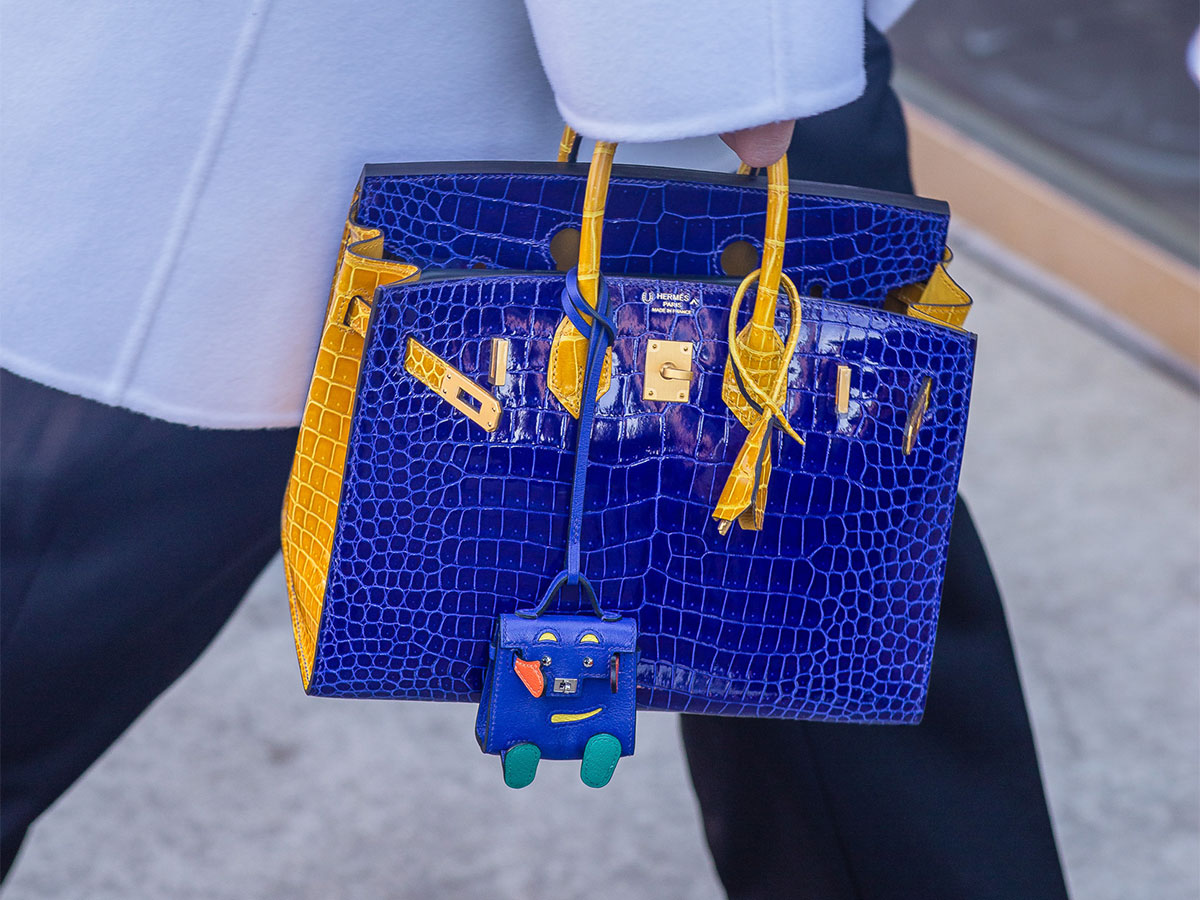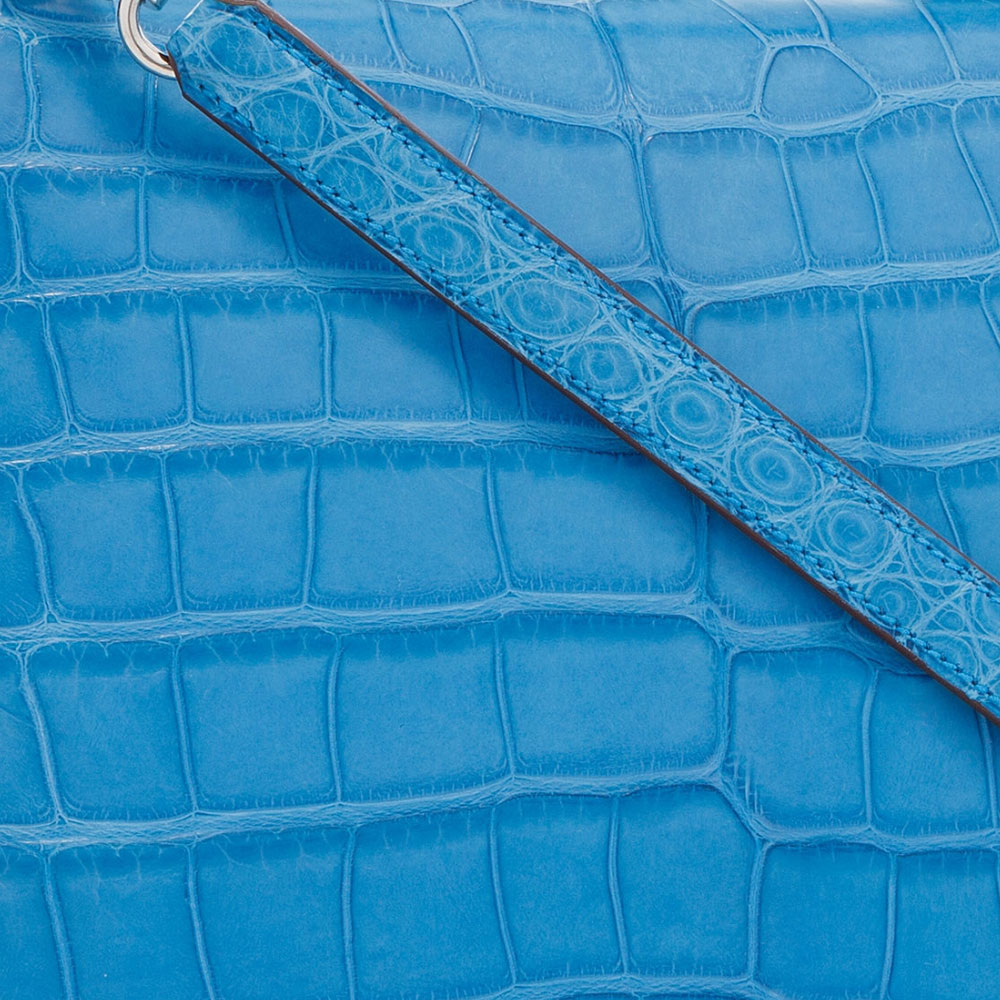نظرة متعمقة على الجلود الفاخرة المستخدمة في حقائب هيرميس - من جلد التمساح إلى جلد النعام.

لطالما اشتهرت هيرميس بتفانيها في التميز والعناية بالتفاصيل، لا سيما في اختيارها للجلود الفاخرة. يستكشف هذا الدليل أندر أنواع الجلود الغريبة وأكثرها احترامًا التي تستخدمها هيرميس في إكسسواراتها الفاخرة.
التمساح: الفخامة مع الإرث
يتميز جلد التمساح من هيرميس، المُستورد من فلوريدا، بطابعه المربع، وهو أنيق ورقيق، وغالبًا ما يُستخدم في التصاميم الصغيرة. تفتقر هذه الجلود إلى المسام الموجودة في قشور التمساح، مما يجعلها مميزة.
لمسة نهائية غير لامعة
جلد التمساح غير اللامع مصقول بنعومة باستخدام اللباد لإبراز ملمسه الطبيعي. يتطلب هذا العلاج جلودًا شبه خالية من العيوب، وهو ذو قيمة عالية لأناقته الرقيقة.
لمسة نهائية لامعة
حجر التمساح اللامع، المصقول بحجر ناعم، يلمع تحت الضوء، ويخفي العيوب بشكل خفي ويضيف دراما بصرية للصور الظلية المدمجة.
التمساح: الأيقونة الغريبة
تستخدم هيرميس ثلاثة أنواع من التماسيح: النيلوتيكوس، والبوروسوس، والموريليتي المراوغ. يمكن تمييز كل نوع من هذه التماسيح من خلال نمط حراشفه وعلامات نقاط العلامة التجارية المميزة.
نيلوتيكوس
يُحصد تمساح النيلوتيكوس في زيمبابوي، وهو مُعَلَّم بنقطتين، وله حراشف مستطيلة أوسع. وهو أقل تكلفة من نظيره من نوع بوروسوس، ولكنه يحظى بنفس القدر من الاحترام لمتانته.
بوروسوس
جلد التمساح الأسترالي بوروسوس، المُشار إليه بعلامة (^)، يتميز بحراشف أصغر وأكثر تناسقًا. وهو أغلى أنواع جلود هيرميس وأكثرها فخامة.
موريليتي
موريليتي، نادرٌ ومميزٌ بثلاث نقاط، موطنه أمريكا الوسطى. يتميز بنسيجه الناعم والمسطح، مزيجٌ بين المظهر اللامع وغير اللامع.
الجلود الغريبة الأخرى
- النعامة : معروفة بنسيجها المنقطة ومرونتها. حساسة للزيوت وأشعة الشمس.
- السحلية : مصقولة إلى درجة عالية من اللمعان، تستخدم في المقام الأول للأشياء الأصغر حجمًا بسبب حجم الجلد المحدود.
لا يمثل كل جلد غريب من هيرميس الفخامة فحسب، بل يلتزم أيضًا بالمعايير البيئية الصارمة، بما في ذلك شهادات CITES التي تضمن المصادر الأخلاقية وحماية الحياة البرية.

